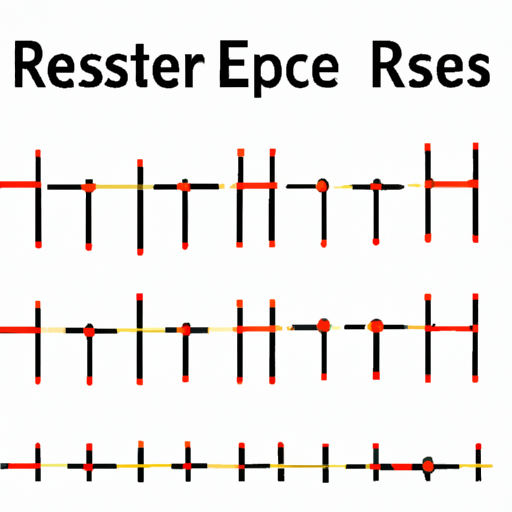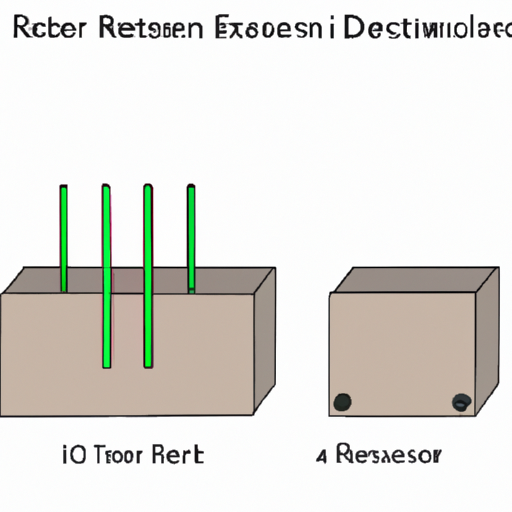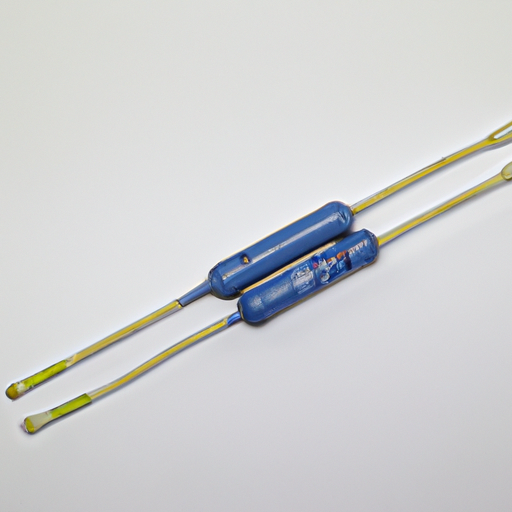What are the popular resistor circuit symbol product types?
What are the Popular Resistor Circuit Symbol Product Types?
I. Introduction
A. Definition of Resistors
Resistors are fundamental electronic components that limit the flow of electric current in a circuit. They are used to control voltage and current levels, divide voltages, and protect sensitive components from excessive current. Resistors are characterized by their resistance value, measured in ohms (Ω), and they play a crucial role in the functionality of electronic devices.
B. Importance of Resistors in Electronic Circuits
In electronic circuits, resistors are essential for ensuring that components operate within their specified limits. They help to manage power distribution, stabilize voltage levels, and prevent damage to sensitive components. Without resistors, circuits would be prone to failure due to excessive current, leading to overheating and potential damage.
C. Overview of Resistor Circuit Symbols
In circuit diagrams, resistors are represented by specific symbols that convey their function and characteristics. Understanding these symbols is vital for anyone involved in electronics, from hobbyists to professional engineers. This blog post will explore the various resistor circuit symbols, the types of resistors available, and the popular resistor product types used in electronic design.
II. Understanding Resistor Circuit Symbols
1. Description and Representation
The basic resistor symbol is a simple zigzag line or a rectangle, depending on the standard used. This symbol represents a fixed resistor, which has a constant resistance value.
2. Variations in Different Standards (IEC, ANSI, etc.)
Different standards may depict the resistor symbol differently. For instance, the International Electrotechnical Commission (IEC) uses a rectangular shape, while the American National Standards Institute (ANSI) often uses a zigzag line. Familiarity with these variations is important for interpreting circuit diagrams accurately.
1. Variable Resistors (Potentiometers)
Variable resistors, or potentiometers, are represented by a similar symbol to fixed resistors but with an additional line indicating the adjustable part. These components allow for manual adjustment of resistance, making them ideal for applications like volume controls.
2. Thermistors
Thermistors, which change resistance with temperature, are represented by a symbol that includes a curved line. This symbol indicates their temperature-sensitive nature, making them useful in temperature sensing and control applications.
3. Photoresistors
Photoresistors, or light-dependent resistors (LDRs), are depicted with a symbol that includes a light source, indicating their sensitivity to light levels. These components are commonly used in light-sensing applications, such as automatic lighting systems.
4. Resistor Networks and Arrays
Resistor networks, which consist of multiple resistors connected together, are represented by a combination of the basic resistor symbol and additional lines to indicate the network configuration. These are often used in applications requiring multiple resistances in a compact form.
III. Types of Resistors
1. Carbon Composition Resistors
Carbon composition resistors are made from a mixture of carbon and a binding material. They are known for their high tolerance and ability to withstand high temperatures, making them suitable for various applications.
2. Metal Film Resistors
Metal film resistors are constructed using a thin layer of metal, providing better stability and accuracy than carbon composition resistors. They are commonly used in precision applications due to their low noise and high reliability.
3. Wirewound Resistors
Wirewound resistors are made by winding a metal wire around a ceramic or fiberglass core. They can handle high power levels and are often used in power applications, such as power supplies and amplifiers.
1. Potentiometers
Potentiometers are adjustable resistors that allow users to change resistance manually. They are widely used in audio equipment, where they control volume and tone.
2. Rheostats
Rheostats are a type of variable resistor designed to handle higher currents. They are often used in applications requiring fine control of current, such as in motor speed controls.
1. Thermistors
Thermistors are temperature-sensitive resistors that exhibit a significant change in resistance with temperature variations. They are commonly used in temperature sensing and control applications.
2. Photoresistors
Photoresistors change their resistance based on light exposure. They are widely used in light-sensing applications, such as automatic streetlights and camera exposure controls.
3. Surge Resistors
Surge resistors are designed to handle high voltage spikes, protecting sensitive components from damage. They are often used in power supply circuits to prevent surges from affecting downstream components.
IV. Popular Resistor Product Types
1. Characteristics and Applications
Carbon film resistors are known for their stability and low noise. They are commonly used in general-purpose applications, such as audio equipment and consumer electronics.
2. Advantages and Disadvantages
Advantages include low cost and good performance, while disadvantages may include lower precision compared to metal film resistors.
1. Characteristics and Applications
Metal film resistors offer high precision and stability, making them ideal for applications requiring accurate resistance values, such as in measurement devices and high-frequency circuits.
2. Advantages and Disadvantages
Their advantages include low noise and high reliability, while disadvantages may include a higher cost compared to carbon film resistors.
1. Characteristics and Applications
Wirewound resistors can handle high power levels and are often used in power supplies and amplifiers. They are known for their durability and ability to withstand high temperatures.
2. Advantages and Disadvantages
Advantages include high power handling and stability, while disadvantages may include larger size and inductance, which can affect high-frequency applications.
1. Characteristics and Applications
Surface mount resistors are compact and designed for automated assembly processes. They are widely used in modern electronics, including smartphones and computers.
2. Advantages and Disadvantages
Their advantages include space-saving design and ease of integration into circuit boards, while disadvantages may include lower power ratings compared to through-hole resistors.
1. Characteristics and Applications
Resistor networks consist of multiple resistors in a single package, providing a compact solution for applications requiring multiple resistances. They are commonly used in signal processing and filtering applications.
2. Advantages and Disadvantages
Advantages include reduced board space and simplified design, while disadvantages may include limited flexibility in resistance values.
V. Applications of Resistor Circuit Symbols
1. Importance of Accurate Representation
Accurate representation of resistors in circuit diagrams is crucial for understanding circuit functionality. Misinterpretations can lead to design errors and circuit failures.
2. Common Mistakes and Misinterpretations
Common mistakes include confusing different resistor symbols or mislabeling resistance values, which can result in incorrect circuit behavior.
1. Role of Resistors in Circuit Functionality
Resistors play a vital role in ensuring that circuits function correctly. They help to manage current flow, stabilize voltage levels, and protect sensitive components.
2. Design Considerations
When designing PCBs, engineers must consider resistor placement, values, and types to ensure optimal circuit performance and reliability.
VI. Conclusion
A. Summary of Key Points
Resistors are essential components in electronic circuits, and understanding their symbols and types is crucial for effective circuit design. From fixed to variable and specialty resistors, each type serves a unique purpose in managing current and voltage levels.
B. The Future of Resistor Technology
As technology advances, resistor technology continues to evolve, with developments in materials and manufacturing processes leading to more efficient and reliable components.
C. Final Thoughts on the Importance of Understanding Resistor Circuit Symbols
A solid understanding of resistor circuit symbols and product types is vital for anyone involved in electronics. This knowledge not only aids in circuit design but also enhances troubleshooting and repair skills, ultimately contributing to the success of electronic projects.
VII. References
A. Suggested Reading Materials
1. "The Art of Electronics" by Paul Horowitz and Winfield Hill
2. "Electronic Principles" by Albert Malvino and David Bates
B. Online Resources for Further Learning
1. Electronics tutorials on websites like All About Circuits and Electronics-Tutorials.ws
2. Online courses on platforms like Coursera and edX focusing on electronics and circuit design.
This comprehensive exploration of resistor circuit symbols and product types provides a solid foundation for understanding their role in electronic design and applications. Whether you are a beginner or an experienced engineer, grasping these concepts is essential for success in the field of electronics.






